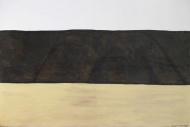Articles
History of New Zealand painting

Early European painting in New Zealand was dominated by landscapes and images of exotic Māori. From the 1890s the local art scene was boosted by the arrival of professional painters from Europe. But it wasn't until the 1930s and 40s that a distinct style of painting began to emerge here.
-
Page 2 – Beginnings
While the first New Zealand artists often had scenic interests, they were also influenced by art historical practices and beliefs.
-
Page 3 – Influence of European modernism
1890–1900 Wellington Harbour, James Nairn The last decade of the 19th century was highly significant for the development of the visual arts in New Zealand.
-
Page 4 – A new New Zealand art
In the 1930s and 1940s a distinctly New Zealand style of painting began to emerge - regionalism that is characterised by a preoccupation with place and local identity.
-
Page 5 – Expressionism and abstraction
The revolutions in early 20th century European art took a long time to influence New Zealand painting. Cubism, for example, took four decades to be accepted here.
-
Page 6 – Contemporary Māori art
Between 1960 and 1980 a strong resurgence of Maori nationalism and culture developed alongside a growing political voice and demand for the honouring of the Treaty of Waitangi
-
Page 7 – Further information
Links and books relating to New Zealand art history
First World War art

During the First World War official and unofficial New Zealand war artists produced a wide range of works depicting this country's war effort. These works later became part of New Zealand's National Collection of War Art.
-
Page 2 – Unofficial war art
New Zealand soldiers used art to interpret the experience of the war for an audience of noncombatant civilians. Civilian artists in turn produced works that responded to and
-
Page 3 – Official war art
The NZEF employed its first official war artist, Lance Corporal Nugent Welch, in April 1918. Welch documented the activities of the New Zealand Division in France and Belgium,
-
Page 4 – Establishing a collection
Following the end of the war, attention turned to where New Zealand's official First World War art collection would be stored. Plans for a National War Memorial Museum in
-
Page 5 – National Collection of War Art
There are around 1500 paintings, drawings, sketches, cartoons and prints in New Zealand’s National Collection of War Art. This collection has its origins in the final year of
Related keywords
- WW1
- war art
- art
- museums
- WW2
- peter mcintyre
- horace moore-jones
- gallipoli campaign
- nugent welch
- george butler
- thomas mackenzie
- frances hodgkins
- wellington city
- painting
- abstract art
- charles goldie
- don peebles
- james nairn
- wellington harbour
- nelson city
- regionalism
- toss woollaston
- portrait
- robert field
- dunedin
- otira
- charles heaphy
- ian scott
- ralph hotere
- bill manhire
- mt taranaki
- christopher perkins
- otago region
- landscape
- colin mccahon
- doris lusk
- koru
- gordon walters
- selwyn muru
- maori art
- rita angus
- takaka
- william hodges
- auckland city
- philip clairmont
-
Main image: Frances Hodgkins
Frances Hodgkins painting in her studio in Bowen Street, Wellington, circa 1905.






















